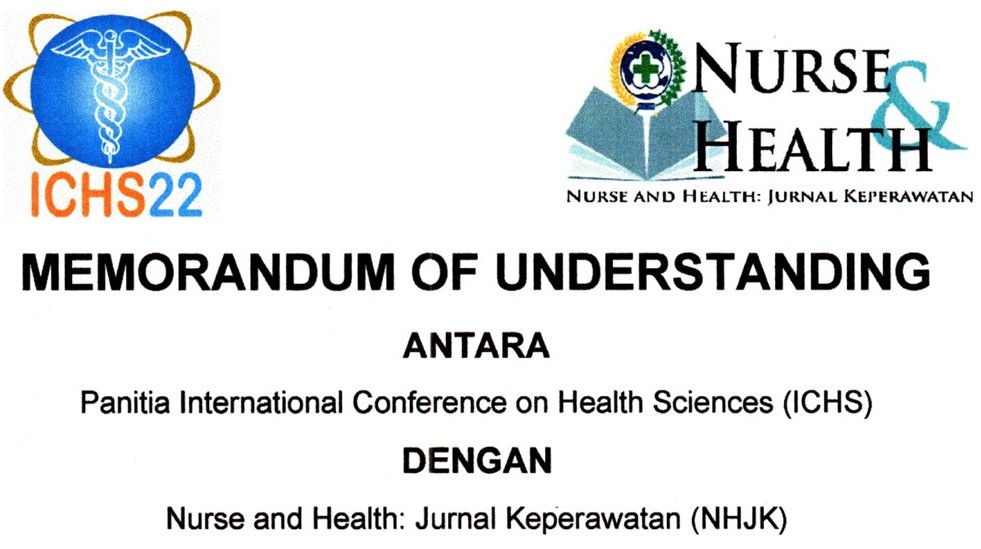THE EFFECT OF CLINICAL TEACHING METHOD AND LEARNING STYLE ON CLINICAL NURSING LEARNING OUTCOMES
Abstract
Background: Nursing Academy of Pasuruan has used problem solving method for learning clinical nursing practice. However, there is obstacle in the implementation of the method due to wide variation in implementing the method among field instructors. Theoretically, bedside teaching method can be used for learning activities to improve learning outcomes. Theoretically, students' learning style is associated with learning outcomes.Objective: This study aimed to examine the effect of clinical bedside teaching method and learning style of students on clinical practice outcome among nursing students at the Academy of Nursing.Method: The research method used Quasi-Experimental. The population source was students at the Academy of Nursing, Pasuruan. A sample of 80 students were selected by simple random sampling. Problem solving was used as a comparison method. The data were collected using standard questionnaires, and analyzed by multiple linear regression model.Result: Results indicated that bedside teaching resulted in higher clinical nursing learning outcome than problem solving method (b = 3.5, p < 0.001, CI 95% 2.6 to 4.4). There was no statistically significant effect of learning styles on learning outcomes of nursing clinical practice (p > 0.05).Conclusion: This study concludes that bedside teaching method results in better clinical nursing learning outcome than problem solving method. It is recommended that all faculty members use bedside teaching as the learning strategy to improve learning outcomes in clinical practice. Key words: Bedside Teaching, Problem Solving, Learning Styles, Clinical Practical Learning Outcomes.Downloads
References
_______. (2008). Metodologi Riset Epidemiologi. Modul dalam Mengajar di Program Magister Kedokteran Keluarga/ Magister Gizi. Universitas Sebelas Maret.
Anglin, G. J. (2010). Instructional Technology: Past, Present ang Future Third Edition. Englewood: Libraries Unlimited.
Carpenito, L. J. (2009). Nursing Care Plans and Documentation: nursing diagnoses and collaborative problems 5th ed. Philadelphia: JB. Lippincott Company.
Depkes RI. (2006). Kurikulum Nasional Pendidikan Diploma III Keperawatan di Indonesia. Jakarta: Depkes RI.
De Porter, B., Reardon, M., Nourie, L. (2010). Quantum Teaching. Bandung: Mizan Pustaka.
De Porter, B., and Hernacki, M. (2009). Quantum Learning. Bandung: Mizan Pustaka.
Dryden, G., and Jeanete, V. (2001). Revolusi Cara Belajar. Bandung: Kaifa.
Huda, M. (2010). Pengaruh Metode Bedside Teaching Pemasangan Infus Terhadap Pengetahuan, Keterampilan Dan Sikap Mahasiswa Keperawatan Di Rumah Sakit Umum Daerah Kabupaten Madiun. Tesis tidak diterbitkan. Surakarta: Magister Kedokteran Keluarga Pascasarjana Universitas Sebelas Maret.
Husin. (2003). Fasilitas Pelayanan Kesehatan Pada Pendidikan Tinggi Keperawatan. Makalah disajikan dalam Seminar Fasilitas Pelayanan Kesehatan Dalam Upaya Peningkatan Pendidikan Kesehatan. Lumajang, 5 April.
Holstein, H. (1986). Murid Belajar Mandiri. Bandung: Remaja Karya.
Jacobs, G. M., Lee G. S., and Ball, J. (1996). Learning Cooperative Learning Via Cooperative Learning. Singapura: SEAMEO Regional Language Centre Singapura.
Keliat, B. A. (2002). Metode Bimbingan Klinik Keperawatan. Makalah disajikan dalam Pelatihan Bimbingan Klinik Keperawatan Profesional Jiwa dan Komunikasi Efektif dalam Bimbingan Klinik Keperawatan. Lawang Malang. RSJP Lawang dan PSIK Unibraw. 8-14 Februari.
Murti, B. (2010). Desain dan Ukuran Sampel Untuk Penelitian Kuantitatif dan Kualitatif di Bidang Kesehatan. Yogyakarta: Gadjah Mada University Press.
Nasution, S. (2011). Berbagai Pendekatan dalam Proses Belajar dan Mengajar. Jakarta: Bumi Aksara.
Notoatmodjo, S. (2007). Pendidikan dan Perilaku Kesehatan. Jakarta: Rineka Cipta.
Nursalam. (2011). Manajemen Keperawatan : Aplikasi Dalam Praktik Keperawatan Profesional. Jakarta: Salemba Medika.
Nursalam and Efendi. (2008). Pendidikan dalam Keperawatan. Jakarta: Salemba Medika.
Nurrahmah, I. (2003). Peran dan Fungsi Pembimbing Praktek Klinik Keperawatan. Makalah disajikan dalam Pelatihan SDM Lahan Praktek dan Institusi Diknakes Propinsi Jawa Timur. Murnajati Lawang, 13 Oktober
Potter, P. A., and Perry, A. G. (2011). Fundamental Keperawatan: buku 2 edisi 7. Jakarta: Salemba Medika.
Reilly, D. E., and Obermann, M. H. (2002). Pengajaran Klinis Dalam Pendidikan Keperawatan Edisi 2. Jakarta: EGC.
Schunk, D. H. (2008). Learning theories: an educational perspective 5th ed. New York: Macmillan Publishing Company.
Slavin, R. E. (2009). Educational Psychology: Theory and Practice 9th ed. Boston: Allyn and Bacon.
Suciati. (2006). Taksonomi Tujuan Insruksional. Jakarta: Buku Acuan Program Pekerti P2P Universitas Negeri Jakarta.
Suherman. (2009). Metode Bimbingan Klinik Keperawatan. Makalah disajikan dalam Pelatihan Bimbingan Klinik Keperawatan Nasional. Malang. Politehnik Kesehatan Malang. 25-28 Februari.
Sujana. (2009). Penilaian Hasil Proses Belajar Mengajar. Jakarta: PT Raja Grafindo Persada.
Sujarwadi, M. (2005). Pengaruh Metode Bedsite Teaching dan Demonstrasi Terhadap Peningkatan Ketrampilan Pemeriksaan Fisik Mahasiswa di Akademi Keperawatan Pemkot Pasuruan. Tugas Akhir tidak diterbitkan. Surabaya: Fakultas Ilmu Keperawatan Universitas Airlangga Surabaya.
Sunaryo. (2004). Psikologi Untuk Keperawatan. Jakarta: EGC.
Suparno, P. (2001). Filsafat Konstruktivisme dalam Pendidikan. Jogjakarta: Kanisius.
Taylor, C., Lillis, C., and Mone, P. L. (2010). Fundamental of Nursing, The Art and Science of Nursing Care. LWW: Seventh, North American Edition.
Widodo, A. (2005). Taksonomi Tujuan Pembelajaran. Retrieved from http://file.upi.edu/Direktori/ DFPMIPA/JUR.PEND.BIOLOGI/196705271992031ARIWIDODO/2005- RevisiTaksonomiBloom-Didaktis.pdf on October 25, 2010.
Authors who publish with Nurse and Health: Jurnal Keperawatan agree to the following terms:
- Authors retain copyright licensed under a Creative Commons Attribution-NonCommercial 4.0 (CC BY-NC 4.0), which allows others to remix, tweak, and build upon the authors' work non-commercially, and although the others' new works must also acknowledge the authors and be non-commercial, they don't have to license their derivative works on the same terms.
- Authors are permitted and encouraged to post their work online (e.g., in institutional repositories or on their website) prior to and during the submission process, as it can lead to productive exchanges, as well as earlier and greater citation of published work (See The Effect of Open Access). Authors can archive pre-print and post-print or publisher's version/PDF.








_resize1.jpg)















